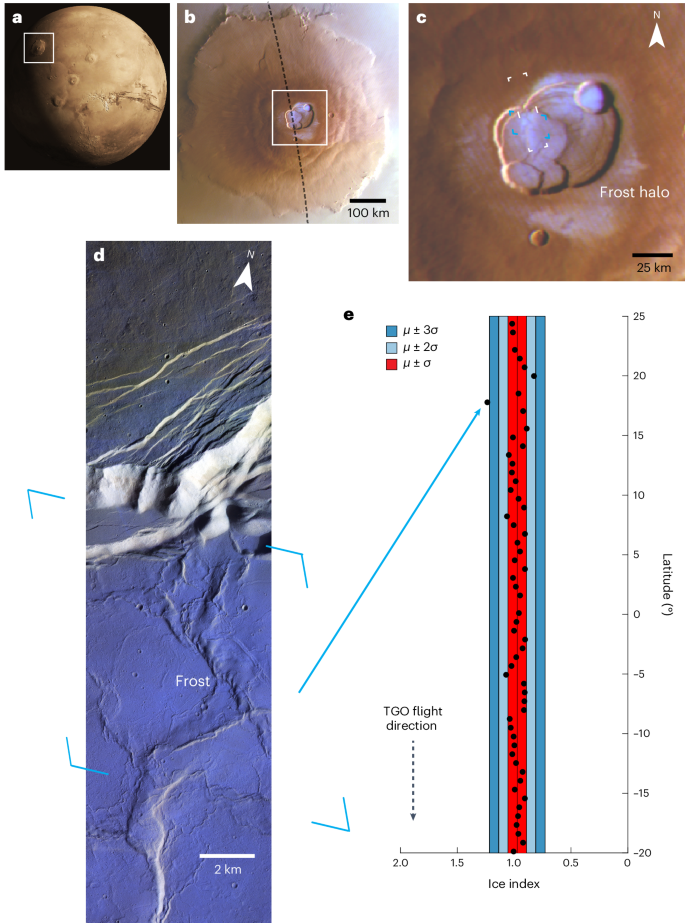2024-06-10 ブラウン大学
<関連情報>
火星のタルシス火山に朝の一時的な水霜が堆積している証拠 Evidence for transient morning water frost deposits on the Tharsis volcanoes of Mars
A. Valantinas,N. Thomas,A. Pommerol,O. Karatekin,L. Ruiz Lozano,C. B. Senel,O. Temel,E. Hauber,D. Tirsch,V. T. Bickel,G. Munaretto,M. Pajola,F. Oliva,F. Schmidt,I. Thomas,A. S. McEwen,M. Almeida,M. Read,V. G. Rangarajan,M. R. El-Maarry,C. Re,F. G. Carrozzo,E. D’Aversa,F. Daerden,… G. Cremonese
Nature Geoscience Published:10 June 2024
DOI:https://doi.org/10.1038/s41561-024-01457-7

Abstract
The present-day water cycle on Mars has implications for habitability and future human exploration. Water ice clouds and water vapour have been detected above the Tharsis volcanic province, suggesting the active exchange of water between regolith and atmosphere. Here we report observational evidence for extensive transient morning frost deposits on the calderas of the Tharsis volcanoes (Olympus, Arsia and Ascraeus Montes, and Ceraunius Tholus) using high-resolution colour images from the Colour and Stereo Surface Imaging System on board the European Space Agency’s Trace Gas Orbiter. The transient bluish deposits appear on the caldera floor and rim in the morning during the colder Martian seasons but are not present by afternoon. The presence of water frost is supported by spectral observations, as well as independent imagery from the European Space Agency’s Mars Express orbiter. Climate model simulations further suggest that early-morning surface temperatures at the high altitudes of the volcano calderas are sufficiently low to support the daily condensation of water—but not CO2—frost. Given the unlikely seasonal nature of volcanic outgassing, we suggest the observed frost is atmospheric in origin, implying the role of microclimate in local frost formation and a contribution to the broader Mars water cycle.



